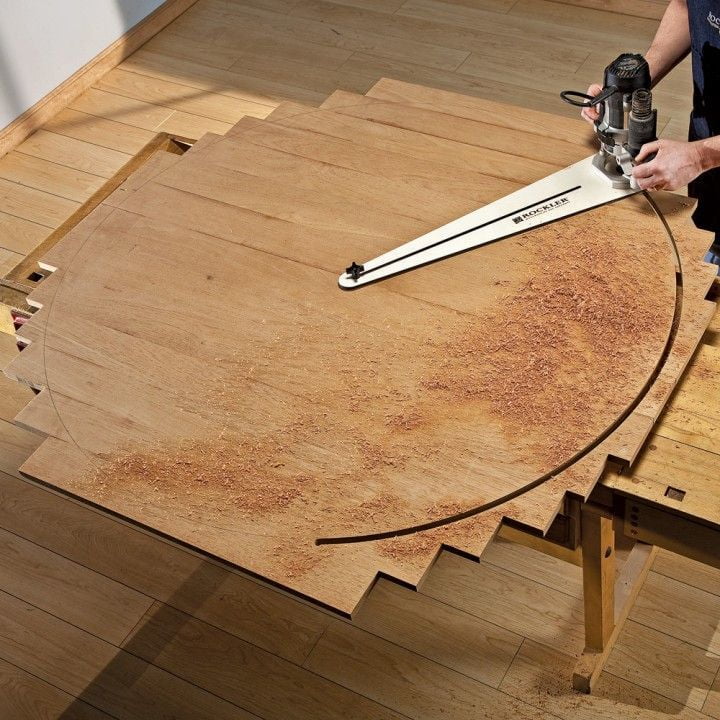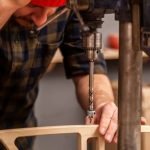Are you wondering what kind of nail gun for woodworking projects? Choosing the right nail gun is crucial for the success and quality of your woodworking endeavors. With various types of nail guns available, it’s essential to understand their differences and how they can impact your projects. In this article, we will explore the importance of selecting the appropriate nail gun for woodworking and discuss the different types available to help you make an informed decision.
When it comes to woodworking, having the right tools can make a significant difference in the outcome of your projects. This applies to nail guns as well, which play a crucial role in joining wood pieces together efficiently and securely. By understanding the differences between brad nailers, finish nailers, and framing nailers, you can determine which type of nail gun best suits your specific woodworking needs.
Factors such as nail size, power source, ergonomics, and the nature of your woodworking project all play a role in choosing the most suitable nail gun. Whether you’re working on delicate trim or heavy-duty framing, making an informed decision regarding the type of nail gun to use can lead to better results and increased efficiency in your woodworking tasks.
Understanding the Different Types of Nail Guns
There are several types of nail guns to choose from when embarking on woodworking projects. Understanding the differences between these nail guns is crucial in ensuring that you select the right tool for the job. The three main types of nail guns commonly used in woodworking are brad nailers, finish nailers, and framing nailers.
- Brad Nailers: These are best suited for delicate woodworking tasks such as attaching trim or molding. They use smaller gauge nails (18-gauge) which leave minimal visible holes and are less likely to split thin pieces of wood.
- Finish Nailers: Ideal for more heavy-duty woodworking projects such as furniture-making, finish nailers use slightly larger nails (15 or 16-gauge). They provide a stronger hold and are suitable for attaching thicker pieces of wood together.
- Framing Nailers: When working on larger structural woodworking projects like building a deck or framing a house, framing nailers are the go-to choice. These nail guns use even larger nails (usually 10 or 12-gauge) and provide a secure hold for substantial wood pieces.
When determining what kind of nail gun for woodworking is appropriate for your project, it’s important to consider the specific uses for each type of nail gun. For fine detail work, a brad nailer would be most suitable, while heavier structural tasks would require the power and hold provided by a framing nailer.
In addition to understanding the different types of nail guns available, it’s essential to consider the specific needs of your woodworking project when choosing a nail gun. Factors such as the size and thickness of the wood being used, as well as the overall scope of the project, will influence which type of nail gun is most appropriate for your needs.
Factors to Consider When Choosing a Nail Gun
When it comes to woodworking, choosing the right nail gun is crucial for the success of your project. Different types of nail guns are designed for specific tasks, so it’s essential to consider several factors before making a decision on which one to invest in. One of the most important considerations is understanding what type of nail gun for woodworking is best suited for your needs.
One key factor to consider when choosing a nail gun for woodworking is the size of the nails you will be using. Depending on the type of woodworking project, you may require different nail sizes. Additionally, considering the power source of the nail gun is vital. While pneumatic nail guns are powerful and durable, cordless ones offer more flexibility and portability.
Ergonomics should also be taken into account when selecting a nail gun for woodworking. Comfort and ease of use can impact productivity and precision in your projects. The weight, grip, and balance of the nail gun play a significant role in how comfortable it will be to operate during extended periods of time. It’s essential to choose a nail gun that feels comfortable and well-balanced in your hand to avoid fatigue and ensure accurate nailing.
| Nail Gun Type | Key Features | Benefits |
|---|---|---|
| Brad Nailer | Suitable for delicate trim work, small moldings | Leaves minimal hole size, reduces risk of splitting wood |
| Finish Nailer | Ideal for crown molding, baseboards, cabinets | Leaves larger holes but holds better in hardwoods |
| Framing Nailer | Best for heavy-duty framing, sheathing work | Powerful enough to drive large nails into tough materials like hardwoods or engineered lumber |
Best Nail Guns for Woodworking Projects
When it comes to woodworking projects, having the right nail gun can make all the difference in the quality and efficiency of your work. There are several different types of nail guns to choose from, each with its own specific uses and benefits. Understanding the differences between brad nailers, finish nailers, and framing nailers is crucial in selecting the best nail gun for your woodworking projects.
Below are some top-rated nail guns for woodworking projects, along with their features and benefits:
1. Brad Nailers: These nail guns are designed for more delicate woodworking tasks such as attaching trim or molding. They use smaller gauge nails, typically from 18 to 23 gauge, making them ideal for small and detailed work.
2. Finish Nailers: Ideal for more heavy-duty woodworking projects like attaching baseboards, crown molding, and cabinetry. They use slightly larger gauge nails ranging from 15 to 16 gauge, providing a stronger hold without damaging the wood.
3. Framing Nailers: Suited for larger-scale woodworking tasks such as building decks, fences, or framing houses. These nail guns use even larger gauge nails (typically 10 to 12 gauge), providing maximum holding power for structural woodwork.
Consideration should be given to the power source of the nail gun when choosing the best one for your woodworking projects. Additionally, ergonomics play a significant role in ensuring comfort during prolonged use. Before making a purchase, it’s essential to evaluate what type of woodworking project you’ll primarily be working on to determine what kind of nail gun will best suit your needs.
In order to ensure safety while using any kind of nail gun for woodworking projects, it’s important to always wear appropriate safety gear such as goggles and ear protection. Additionally, understanding how to properly operate a nail gun and being aware of potential hazards is crucial in preventing accidents in the workshop environment.
With proper maintenance and care, a high-quality nail gun can last for years while performing at its best. Regular cleaning and lubrication will help prevent jamming and extend the lifespan of the tool. Storing the nail gun in a dry environment when not in use will also contribute to its longevity.
Avoiding common mistakes when using a nail gun can greatly improve not only safety but also overall project quality. One common mistake is failing to properly inspect wood surfaces before nailing, leading to splitting or damage. Taking extra care during this inspection process can save both time and materials by preventing unnecessary errors.
By considering all these factors when choosing a suitable nail gun for woodworking projects – from understanding their specific uses and features to prioritizing safety measures – you can ensure that your investment will yield efficient results on all your future woodworking endeavors without compromising on quality or safety.
Safety Tips for Using Nail Guns in Woodworking
When it comes to using a nail gun for woodworking, safety should be the top priority. The powerful force used to drive nails into wood can pose significant risks if not operated correctly. One of the first safety tips to follow is to always wear appropriate safety gear, including protective eyewear and ear protection. Additionally, it’s important to ensure that there are no distractions in the work area, as any lapse in focus could lead to accidents.
Another crucial safety tip when using a nail gun for woodworking is to keep your hands away from the firing area. This means never placing your hands or fingers near the nose of the nail gun when it is loaded or in use. Also, it’s essential to keep the tool at a safe distance from your body and avoid pointing it at anyone else. Proper handling and storage of nails are also important factors in preventing potential injuries.
Furthermore, before using a nail gun for woodworking, it is vital to read and understand the manufacturer’s instructions and guidelines thoroughly. This includes familiarizing yourself with how to load and unload nails safely, as well as any specific precautions unique to the model of nail gun being used.
| Safety Tips | Details |
|---|---|
| Wear appropriate safety gear | This includes protective eyewear and ear protection. |
| Keep hands away from firing area | Avoid placing hands near the nose of the nail gun when loaded or in use. |
| Read manufacturer’s instructions | Familiarize yourself with loading/unloading procedures and other precautions. |
Maintenance and Care for Nail Guns
When it comes to woodworking projects, choosing the right nail gun is crucial for achieving professional and high-quality results. Whether you are working on small woodworking crafts or larger construction projects, using the appropriate nail gun can make a significant difference in the outcome of your work. One of the key aspects of ensuring that your nail gun continues to perform at its best is proper maintenance and care.
Proper Maintenance Practices
Taking care of your nail gun involves a few essential practices to keep it in optimal condition. One crucial aspect is regular cleaning. Sawdust and debris can accumulate inside the nail gun over time, affecting its performance. It’s important to disassemble the tool periodically and clean all parts thoroughly. Additionally, lubricating moving parts such as the piston, driver blade, and magazine with a recommended oil will help ensure smooth operation.
Storage
How you store your nail gun when not in use also plays a vital role in its longevity. It’s best to keep it in a dry place away from extreme temperatures and humidity. Utilizing a carrying case or storage box designed for nail guns can protect it from dust and damage. When transporting the tool, always use a secure case or bag to prevent any mishaps.
By following these maintenance practices and proper care guidelines for your nail gun, you can prolong its life and optimize its performance for all your woodworking projects, ensuring consistent and reliable results every time.
Common Mistakes to Avoid When Using a Nail Gun
When it comes to using a nail gun for woodworking, there are certain common mistakes that should be avoided to ensure safety and quality in your projects. By being aware of these potential errors, woodworkers can prevent accidents and improve the overall outcome of their projects.
Incorrect Nail Size and Type
One common mistake when using a nail gun for woodworking is using the wrong size or type of nail for the project at hand. Using nails that are too long or too short can result in weak joints or damage to the wood.
It’s important to select the appropriate nail size and type based on the thickness and material of the wood being used. For example, brad nailers are ideal for delicate trim work, while framing nailers are more suitable for heavier construction.
Poor Handling and Use
Another mistake to avoid is poor handling and use of the nail gun. This includes not maintaining a firm grip on the tool, not keeping fingers away from the trigger when not in use, and not paying attention to where the nail is being driven. Improper handling can lead to accidental firing of nails, which can cause injury or damage to the woodwork.
Failure to Maintain and Clean the Nail Gun
Neglecting proper maintenance and cleaning of the nail gun is also a common mistake that should be avoided. Dust, debris, and residue from adhesives can build up in the tool over time, affecting its performance and lifespan. Regular cleaning, lubrication, and inspection of the nail gun will help ensure its optimal performance and longevity.
Being aware of these common mistakes when using a nail gun for woodworking projects can help woodworkers achieve better results while minimizing risks. By selecting the right type of nail gun for the specific woodworking task at hand, understanding proper handling techniques, maintaining the tool regularly, avoiding these mistakes will ultimately contribute to successful woodworking projects.
Conclusion
In conclusion, selecting the right nail gun for woodworking projects is crucial for achieving high-quality results and ensuring safety in the workshop. As discussed in this article, understanding the different types of nail guns, considering factors such as nail size and power source, and evaluating the specific needs of a woodworking project are all important steps in choosing the best tool for the job.
When it comes to woodworking, brad nailers are ideal for delicate trim work and smaller wood pieces, while finish nailers are better suited for larger trim and furniture assembly. Framing nailers, on the other hand, are essential for heavier construction tasks such as framing walls and building decks. Each type of nail gun serves a distinct purpose in woodworking and can greatly impact the efficiency and quality of the finished product.
It’s important to remember that safety should always be a top priority when using any kind of nail gun. Following proper operating guidelines, wearing appropriate protective gear, and being mindful of potential hazards can help prevent accidents and injuries in the workshop.
Additionally, regular maintenance and care of nail guns will not only extend their lifespan but also contribute to consistent performance in woodworking projects. By taking these considerations into account, woodworkers can confidently choose the right nail gun for their specific needs and ensure successful outcomes in their craft.
Frequently Asked Questions
What Type of Nail Gun Is Best for Woodworking?
The best type of nail gun for woodworking is typically a finish nailer. This type of nail gun is versatile and can handle a variety of woodworking projects, from trim work to furniture construction. Finish nailers are designed to drive larger nails into wood without splitting the material, making them ideal for creating strong joints and smooth finishes.
Is a Brad Nailer or Finish Nailer Better for Woodworking?
When it comes to woodworking, both brad nailers and finish nailers have their own strengths. A brad nailer is better suited for delicate trim work and thin or small pieces of wood, as it utilizes smaller gauge nails that are less likely to split the material.
On the other hand, a finish nailer is more powerful and suitable for heavier woodworking tasks such as attaching baseboards, crown molding, or larger pieces of wood.
What Is the Difference Between a Pin Nailer and a Brad Nailer for Woodworking?
The main difference between a pin nailer and a brad nailer for woodworking is the size of the nails they use. Pin nailers use very small gauge nails that are nearly invisible once driven into the wood, making them perfect for delicate trim work and glue-ups where you don’t want visible holes.
Brad nailers, on the other hand, use slightly larger gauge nails that provide more holding power but may also leave behind more noticeable holes in the wood. Choosing between the two depends on the specific needs of your project – finesse or strength.

Hi everyone! I’m a woodworker and blogger, and this is my woodworking blog. In my blog, I share tips and tricks for woodworkers of all skill levels, as well as project ideas that you can try yourself.





